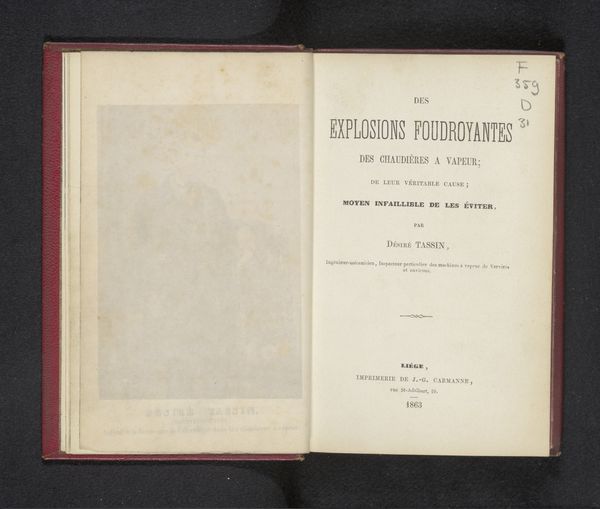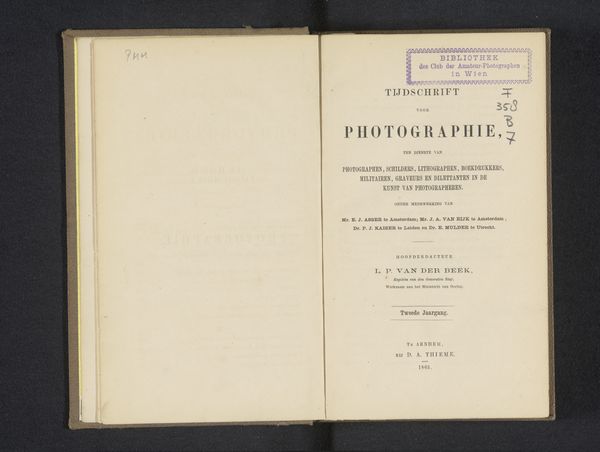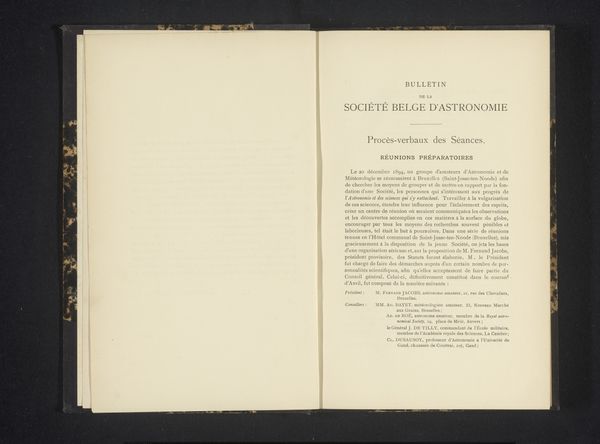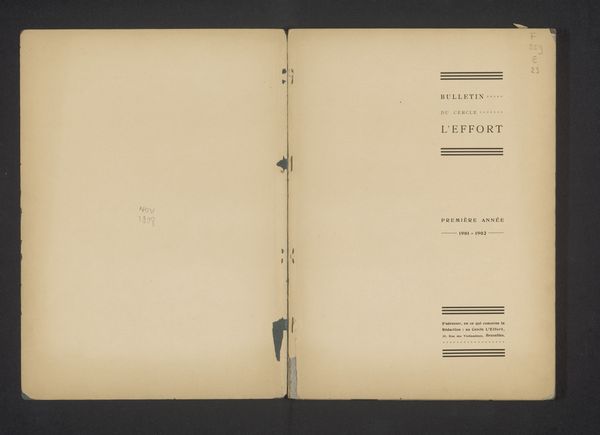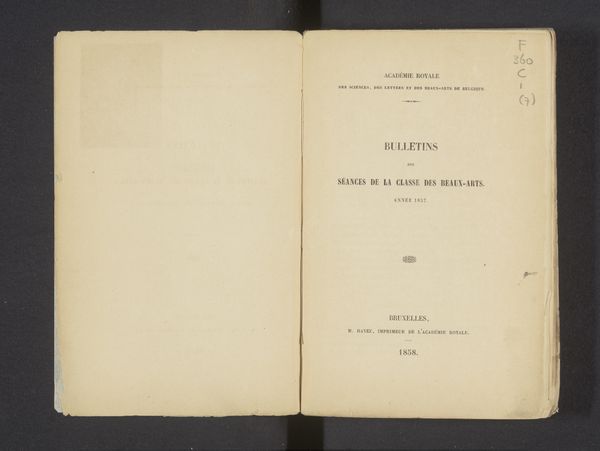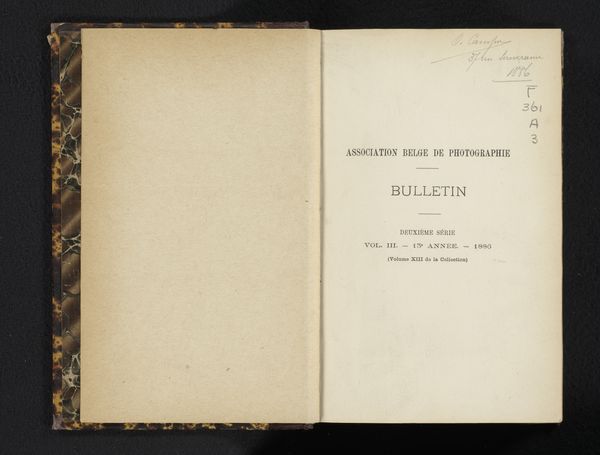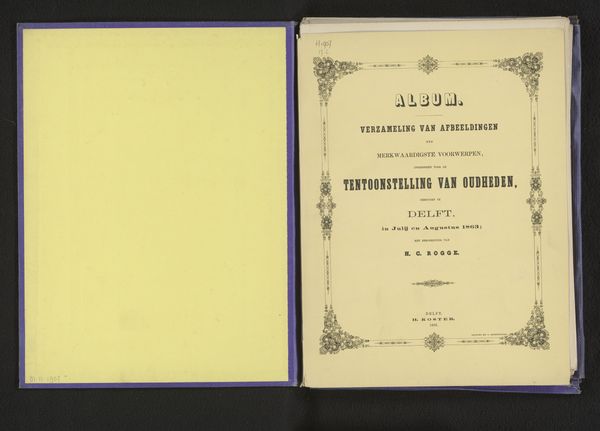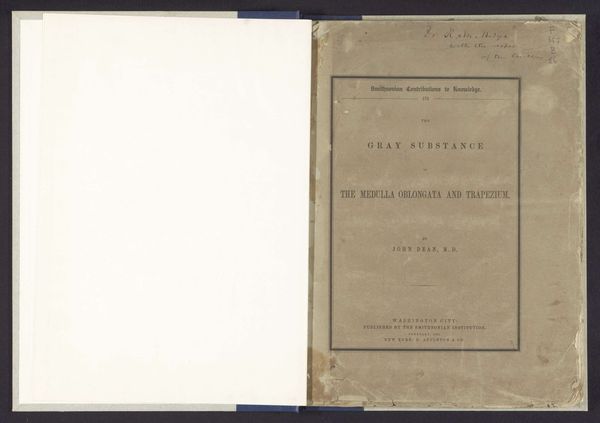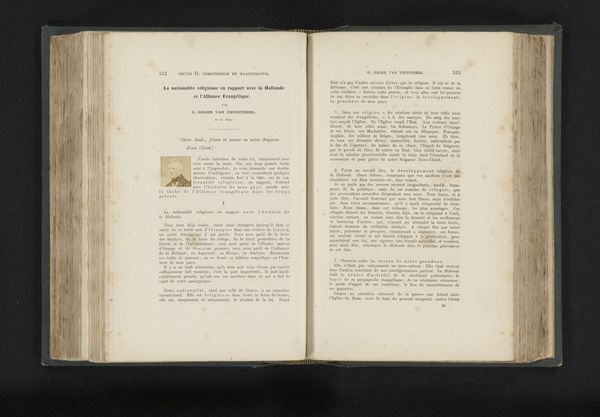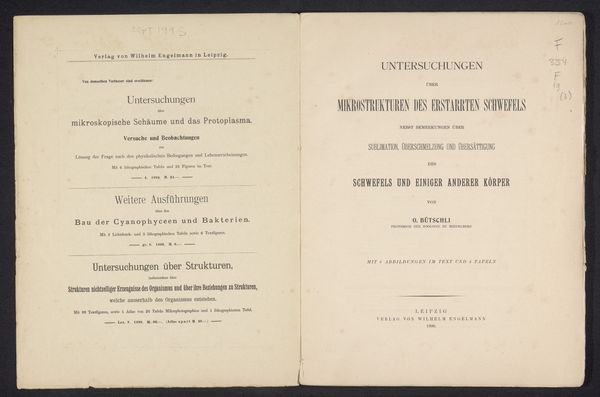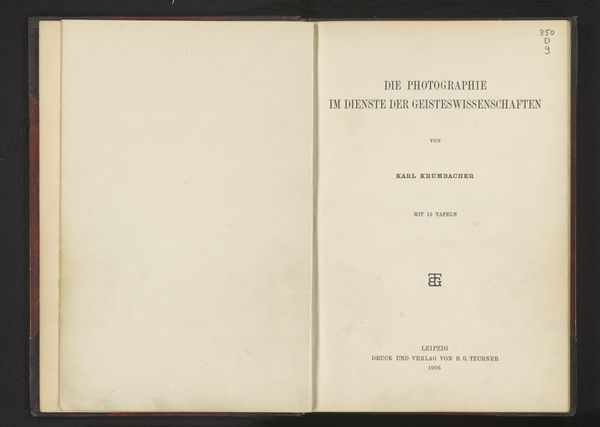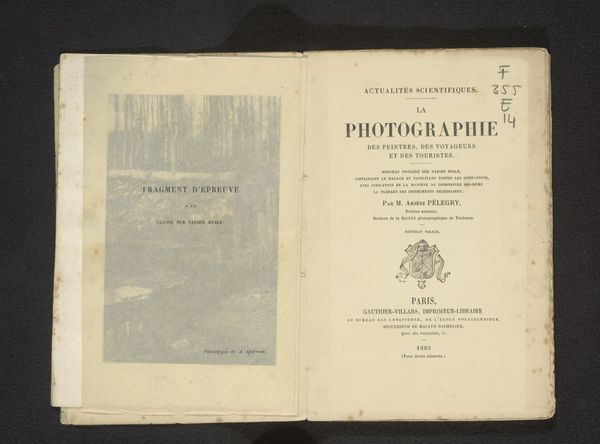
Zehn photographische Abbildungen zum Nachweis der günstigen Heilresultate meiner Behandlung veralteter spontaner Luxationen im Hüftgelenke mit einer historischen Einleitung über die Fortschritte der Orthopädie nebst zwei Krankengeschichten : Ergänzungsschrift zu meinem Werke "Praktische Erfahrungen auf dem Gebiete der Orthopädie" 1863
0:00
0:00
print, photography
# print
#
photography
#
history-painting
#
realism
Dimensions: height 249 mm, width 167 mm, thickness 60 mm
Copyright: Rijks Museum: Open Domain
Curator: The cool austerity of this photographic print from 1863 arrests me instantly. It’s an image taken from Johannes Wildberger’s "Ten Photographic Images to Demonstrate the Favorable Healing Results of My Treatment of Obsolete Spontaneous Dislocations in the Hip Joints with a Historical Introduction on the Progress of Orthopedics Along with Two Case Histories: Supplementary Treatise to My Work “Practical Experiences in the Field of Orthopedics.” Editor: It presents such a stark contrast between the promise of photographic realism and the antiquated medical practices it seeks to validate. The yellowed paper adds a layer of time, making me ponder on past perceptions of medical science and what images they chose to circulate. Curator: Yes, exactly. I see those historical ripples too. Orthopedics itself was in its relative infancy then; the visual language—the “photographic images” in the title—is almost trying to borrow credibility by associating with objectivity. What symbols or visual cues do you discern that hint at those emerging scientific values? Editor: The very format feels crucial: a bound volume, suggesting systematic knowledge. Photography also has its own aura as scientific progress. Then there is also the way medical advancement becomes equated with social progress, or maybe an attempt to portray it as such for a 19th-century audience so they may consume Wildberger's ideas. It projects, literally and figuratively. Curator: I agree. There's an undeniable propagandistic undercurrent at play. But look closer at that language, “favorable healing results” — it strikes me as a particularly deliberate turn of phrase. Were such claims common in similar publications, do you think? What part do you think printing plays here? Editor: Medical pamphlets of this era commonly made bold claims, although the presentation here seeks to legitimize it. The printing indicates that dissemination of Wildberger's thoughts becomes a project towards gaining further traction with the population. A photo humanizes it but a book grants more merit through institutional appeal. Curator: Right. I hadn't thought of how deeply entwined social influence is with medical documentation like this. It underscores that images not only represent, but also attempt to mold public perception in really persuasive ways. Editor: Yes, an interesting tension between raw evidentiary promise and very calculated framing. Thank you for letting me reflect together on how images wield power in medicine and history alike!
Comments
No comments
Be the first to comment and join the conversation on the ultimate creative platform.
